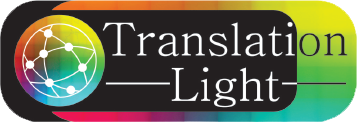Murphy’s Law: “If you write anything criticizing editing or proofreading, there will be a fault of some kind in what you have written.”
The language translation industry is spreading and growing very fast. The translation industry is helping various companies to grow beyond geographical and linguistic boundaries. Proofreading and editing is the most pivotal part of the process of Translating languages. Proofreading/Editing is a completely different work that requires literary sense and linguistic knowledge. Proofreading involves detection of grammatical errors and inconsistencies, punctuation errors, spelling mistakes, etc.
In the era of technology, we consider computers or various software to be some kind of magical tools that never commit errors. But, most of the time computers tend to overlook mistakes. The most common defaults occur with Homophones, Spacing, inconsistencies in capitalization, spelling, and hyphenation. These errors can be detected through proofreading. Translation proofreading is the crucial final stage of any translation process, where human engagement is necessary. For example, When a Japanese novel like Norwegian Wood by Haruki Murakami was translated in English for global readers, the proofreader of the text went through the whole piece to spot any error by making the translation spotless. This process is relevant for various Indian texts as well.
A simple issue of punctuation can change the whole meaning of a text, even though it seems flawless. Editing involves content fixing and making the translation more readable to the natives. Proofreading/Editing is essential when it comes to translating official documents for various purposes. Official documents (Birth certificate, marriage certificate, etc ) that are not written in English or in the primary language of the country where you want to apply for a Visa, should be accompanied by certificate translations that are 100% accurate. Your application will be rejected without the translator’s signature, stamp and a seal of authenticity and accuracy. You definitely don’t want to get rejected from your dream job or living in your dream country.
“What is the need for proofreading if you can use various translating software? ” This is the question that comes in the mind of everyone that is hesitant to go to a translating agency. Proofreading has various branches. It is so much more than detecting errors that meet the eye in the very first reading. So, let’s discuss the various branches of translation proofreading that are done professionally.
Terminological Proofreading:
Scientific, legal and medical texts are mostly based on logic and terminology. The slightest misplacement in terminology could be taken as a fatal flaw. So, the terminological proofreading in translation services includes checking terminology to make sure every term is well placed correctly.
Proofreading and Editing To Polish Your Marketing Game :
According to your preferences, the proofreader will stylistically edit and proofread your marketing materials to give it a polished look for the purpose of increasing your marketing globally.
Proofreading and Editing for Printing :
Pre-print proofreading and editing are essential for the purpose of publishing an error-free accurate text. This branch of proofreading and editing is done after all the basic graphic design/ DTP has been completed and the work of the proofreader is to go through the final text to make sure everything is up to the mark.
Bilingual Proofreading :
Bilingual Proofreading is one of the most common types of proofreading services in the translation industry, where the proofreader will an excellent knowledge about the source and target languages. For example, A German manuscript is going to be translated into English. So, the proofreader will have a wide knowledge of both these languages. The proofreader will have to check the English text against the German text to make sure everything is correct.
Monolingual Proofreading:
Monolingual Proofreading is the best solution when it comes to linguistic accuracy and stylistic efficiency. In this branch of proofreading, the proofreader does not speak the source language and he checks the translated text to make sure the translation follows all the rules of the target language.
As we know, proofreading and editing is the only area of the translation process that requires human interference to deliver a wonderful translated text. There are few fields where one cannot afford a minor mistake. Medical, Science and Law are those fields where one has to be extremely attentive because a simple mistake can change a very crucial theory. Let’s explore the importance of proofreading and editing while performing the translation in Medical, Legal and Scientific fields.
Medical and Scientific Fields:
Translations in medical and Scientific papers require a precise presentation, maximization of accuracy and appropriate terminological use to boost up your Medical presentation. Your written documents will surely have an impact to enhance your publications, scientific research and success in fundraising. The editor will verify the quality and readability of the translation, coordinate terminology, and usage of style, resolve terminological disagreements and update project-specific glossary. However, the proofreader will verify the correctness of numerology, assemble the translated fragmented documents into a complete document, work on graphics and make sure everything is inserted properly. They will go through the whole translated text and will perform bilingual Proofreading to make your Medical and Scientific documents because science should be readable to everyone.
Legal Field:
“Proofreading legal documents need more than a spell check.” When it comes to legal documents, it adds so much more than just a spell check. Legal proofreading and editing is highly contextual and requires industry knowledge which software will not provide. The proofreader checks for inconsistencies, industry-specific spelling, grammar usage error, styling error, and formatting defaults. A legal proofreader will have excellent knowledge in the legal industry and connected with recurrent trends of writing. Legal proofreading and editing will make sure that your paperwork is flawless and it is imperative to be successful in the legal game.
In the world of software, everyone thinks that each error can be detected and resolved by computers. But, computers are still unable to reach that goal. Proofreading and editing still make its way to the top in this world of translation services.
